Finding the Right Marketing Mix for 2025 in the Construction Industry
Many marketers claim to have the perfect formula for your 2025 marketing strategy, but the reality is that no single approach works for every construction business. Strategies that succeed for one company may fall short for another. The key is to analyse your data, identify where you’ve achieved the best return on investment (ROI) in the past, and determine which channels offer the most potential for future growth.
Below, we’ll explore which marketing channels are most likely to deliver strong returns in 2025 and how to balance your budget between quick-win campaigns and long-term brand-building. By the end, you’ll have a clear idea of how much budget should be spent on marketing, what is a good budget for marketing strategy, what are the four elements of a marketing budget, and what is an example of a marketing budget for your construction-focused business.
Why There’s No One-Size-Fits-All Strategy
Before diving into channels, it’s important to understand why you shouldn’t copy another company’s exact budget allocation. Even if you operate in the same sector, you have a unique audience, unique strengths, and different objectives. Here’s what you need to assess:
- Previous ROI: Look at your marketing data from the last few years. Which channels brought in the highest returns? Which campaigns did not go as planned?
- Existing Strengths: Do you already have a strong social media presence but weak search visibility? Your budget might go further if you invest more in SEO or Paid Media the following year.
- Growth Potential: Are there channels where your construction audience is active but you haven’t tried yet? Sometimes exploring a new platform can open up new routes to sales, at a lower cost than expanding a more mature channel.
Which Channels Could Deliver the Highest Returns in 2025?
SEO (Search Engine Optimisation)
Construction companies often overlook SEO, but it remains one of the most cost-effective ways to reach people actively searching for your services or products. By improving your rankings for relevant keywords (e.g., “commercial roofing solutions” or “construction project management tools”), you capture high-intent traffic whilst someone is actively searching for answers.
- Best For: Long-term brand visibility and steady lead generation.
- Tip: Invest in quality content. Case studies, project highlights, and blog posts show potential customers why they should trust you.
Paid Advertising (Google Ads, Shopping, and Programmatic)
Paid search and shopping ads can deliver immediate leads, especially if you offer niche construction products or services in high demand. You can track conversions, cost per acquisition, and ROI in real-time.
- Best For: Speed to market, driving lead volume leads and direct sales.
- Tip: Refine your targeting. Make sure your ads only appear to your ideal audience—such as property developers, site managers, or home renovators.
Paid Social Media (LinkedIn, Facebook, Instagram, TikTok)
Most construction businesses aim to connect with decision-makers, from architects to project managers. LinkedIn is often overlooked due to its high cost but can be very effective for building B2B relationships. Facebook and Instagram remain powerful for brand awareness and showing the human side of your company. Through effective paid social media campaigns, your business can reap the benefits of increased traffic and conversions.
- Best For: Brand-building, community engagement, and relationship management ( however direct sales are still possible and a good ROAS can be achieved if managed correctly).
- Tip: Keep your ad content fresh and test new approaches frequently—ads fatigue quickly. It's always good to demonstrate your company's expertise and authenticity.
Organic Social
Organic social might not provide instant leads, but it strengthens brand loyalty. Highlighting completed projects and sharing testimonials can build trust. Over time, a strong social presence keeps you top of mind when potential clients are ready to hire.
- Best For: Ongoing engagement, nurturing leads, and supporting paid campaigns.
- Tip: Encourage existing customers to engage with your posts. Positive comments and shares can boost credibility within the construction community.
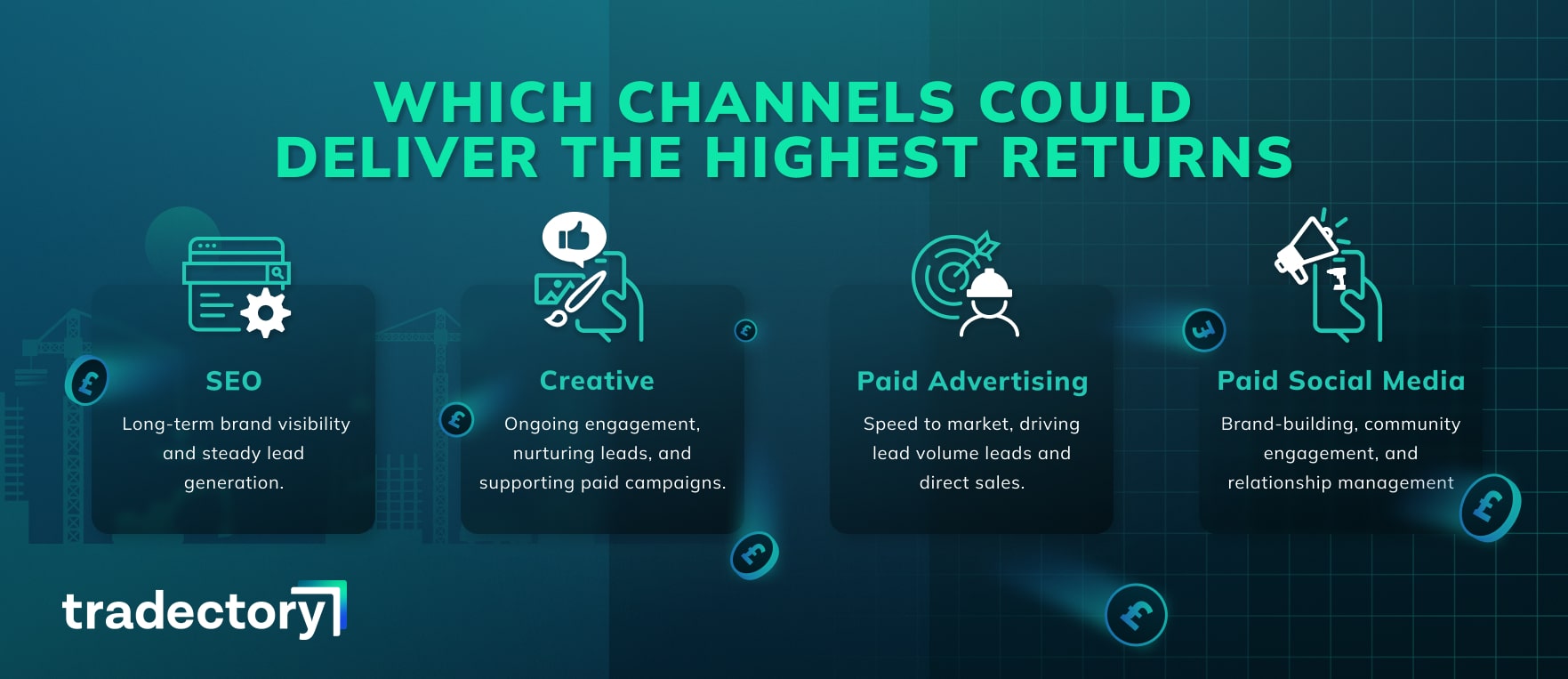
Balancing Quick Wins and Long-Term Brand Building
Striking the right balance between “quick-win” campaigns (paid ads, direct lead generation) and “long-term” efforts (SEO, content marketing, brand awareness) is essential. Quick wins keep revenue flowing, while long-term initiatives ensure steady growth down the road.
Short-Term (Paid Ads and Promos)
- Focus on immediate, trackable results and measurable ROI.
- Ideal if you need to drive leads quickly or promote a new service, especially in a mature market.
- Keep these campaigns well-optimised to avoid overspending.
Long-Term (SEO, Content, Organic Social)
- Takes time to produce visible returns but can be more cost-effective overall.
- Builds authority and credibility in the eyes of customers and search engines.
- Works best when aligned with your overarching business goals.
How Much Budget Should Be Spent on Marketing?
Businesses often wonder, “What is a good budget for marketing strategy?” There’s no single right answer. However, many construction companies allocate 5–10% of annual revenue to their marketing efforts. If you’re seeking rapid expansion or need to catch up to bigger competitors, you might go higher. If your brand is already well-known, you might focus on optimising current campaigns rather than broad expansion.
What Is an Example of a Marketing Budget?
Below is a sample breakdown (totalling 100%). Use it as a starting point, then adjust based on your situation.
40% Paid Advertising
- Google Ads, Shopping, LinkedIn Ads, Facebook Ads
- Goal: Immediate lead generation and sales
30% SEO and Content Marketing
- On-page optimisation, blogging, case studies, link-building
- Goal: Boost organic traffic and long-term authority
20% Branding and Community Engagement
- Organic social media, industry events, trade show presence
- Goal: Build trust, relationships, and brand awareness
10% Tools and Technology
- Analytics software, CRM systems, reporting tools
- Goal: Efficient tracking, measurement, and optimisation
If your paid advertising consistently brings strong returns, you might increase that proportion. On the other hand, if you see more value in your organic efforts, reallocate funds to content production and SEO.
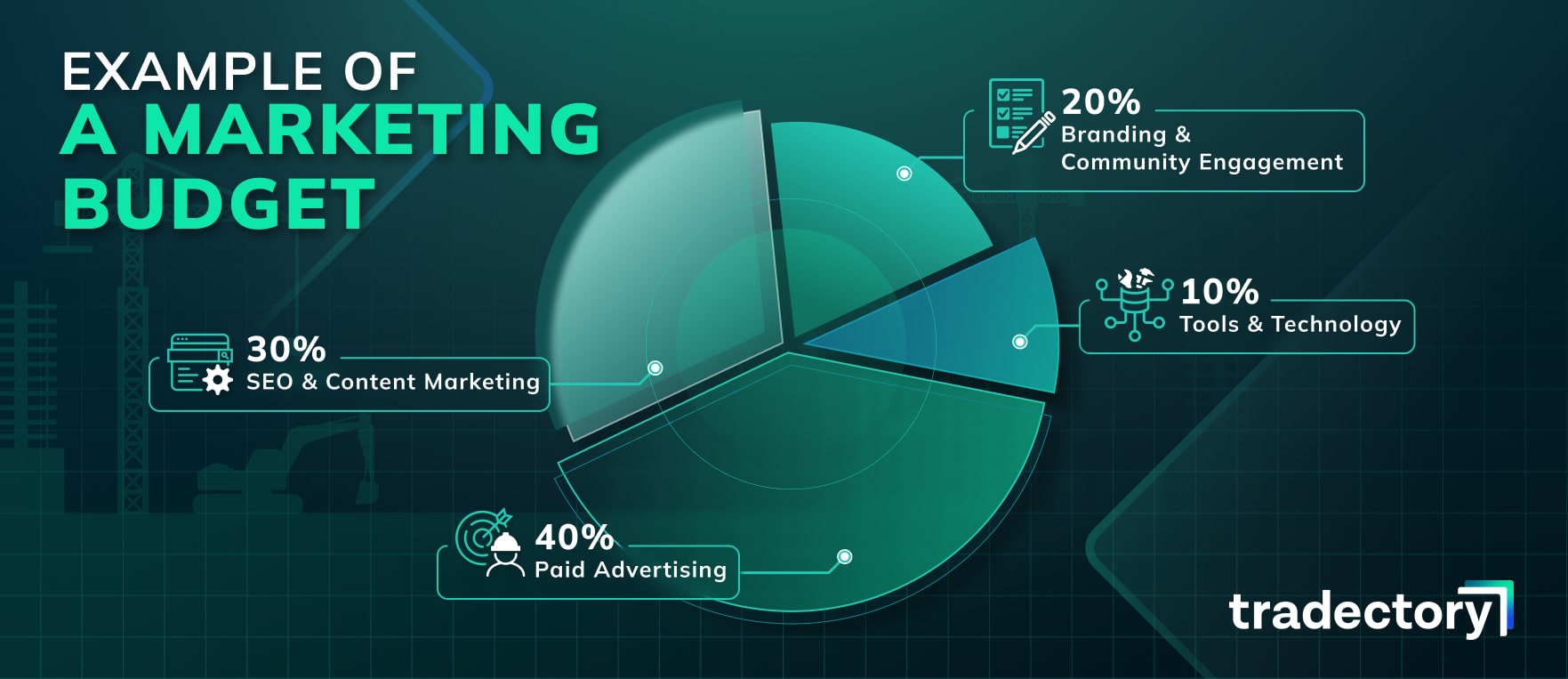
Conclusion
Your marketing strategy in 2025 should reflect your unique goals, past results, and where your audience is most engaged. While SEO, paid advertising, and social media remain key channels, the right balance depends on your strengths and objectives. If brand recognition is your priority, lean into social platforms and content marketing. If you need quick sales, allocate more to paid search.
Whatever the mix, it’s crucial to measure performance regularly and adjust as needed. There is no single blueprint for construction marketing success, but a well-planned and flexible budget—split between short-term wins and long-term brand building—will help your business compete and grow in the evolving market of 2025.
Contact the Tradectory team today to see how we can help elevate your campaigns and strategies for future growth in the construction industry.
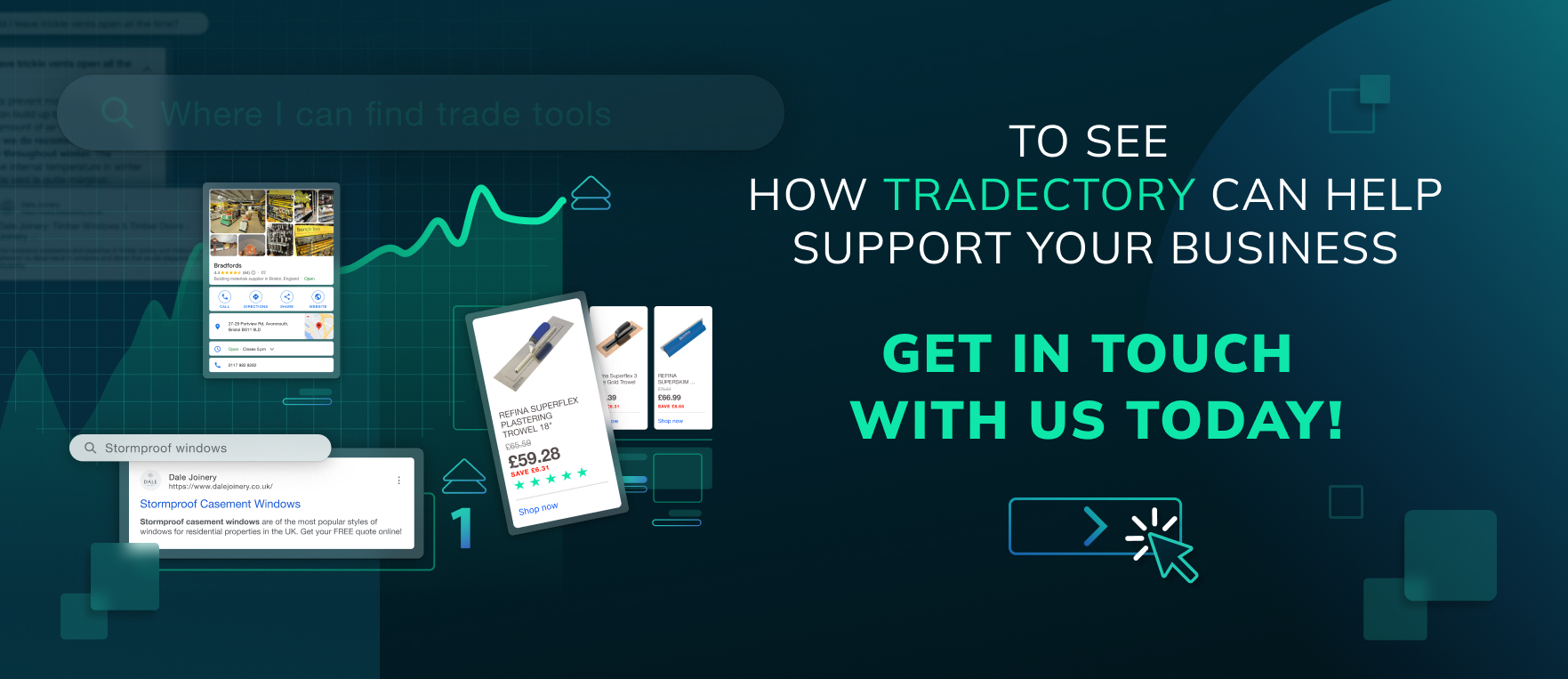
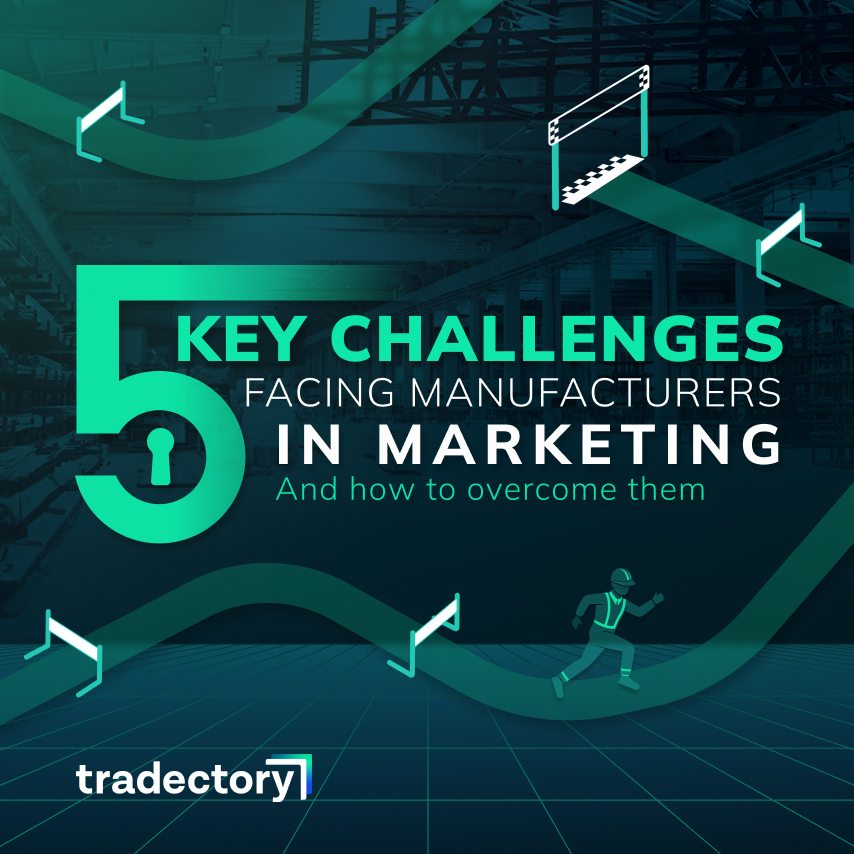
5 Key Challenges Facing Manufacturers in Marketing (And How To Overcome Them)
Are you facing any of these challenges when it comes to construction manufacturer marketing? Here’s how to solve them.
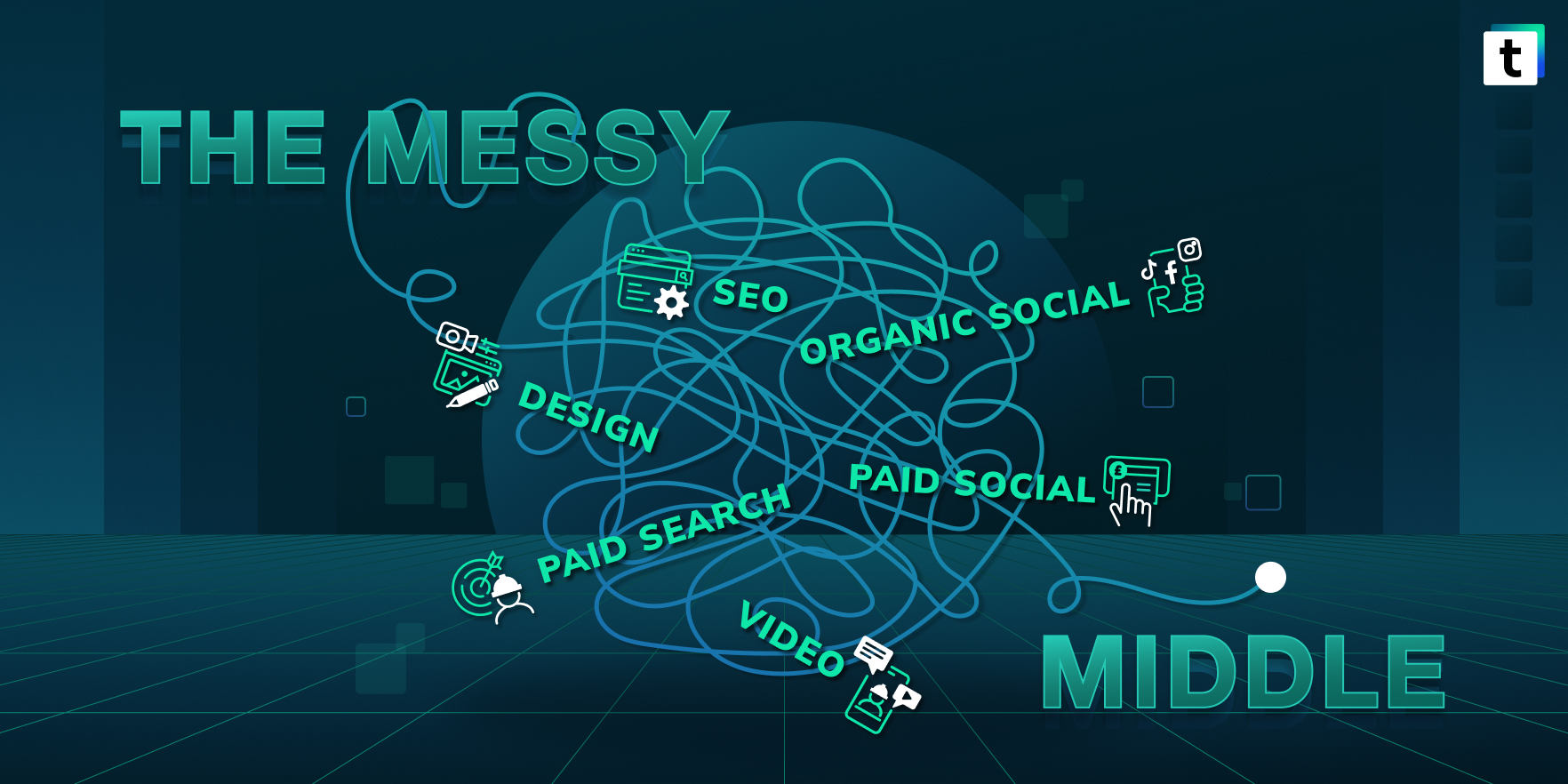
The Messy Middle: A Strategic Approach to Multi-Channel Marketing
Discover how to navigate the ‘Messy Middle’ of multi-channel marketing with a strategic approach that maximises engagement, boosts conversions, and streamlines the customer journey.
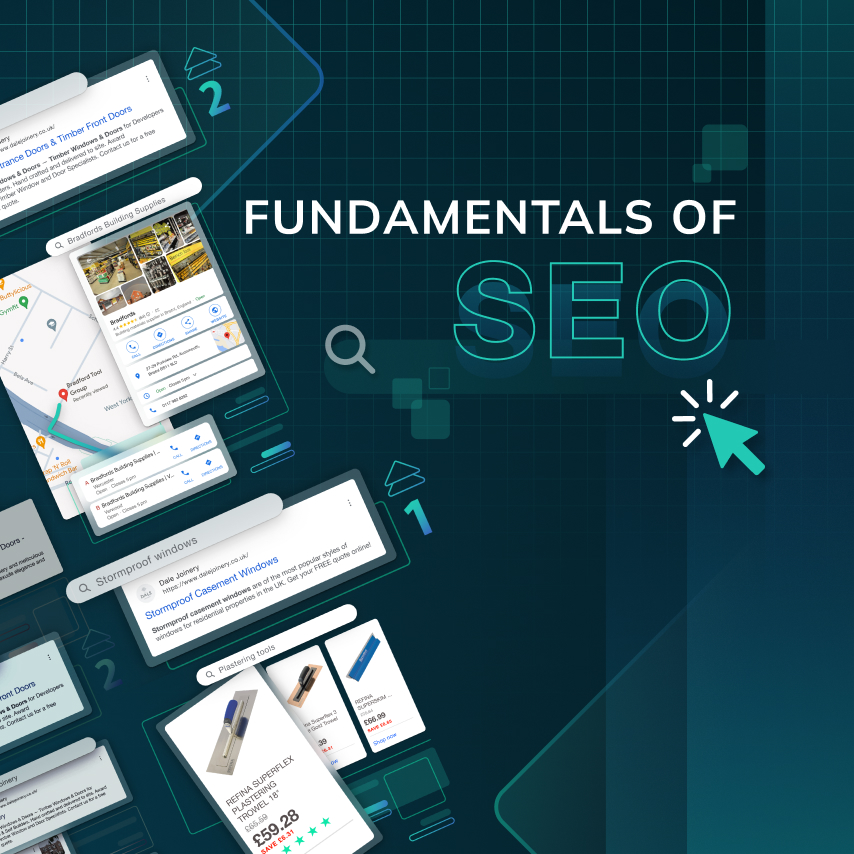
Understanding The Basics of SEO: A Beginners Guide For The Construction Industry
Understand the fundamentals of SEO with our beginners guide for the construction industry. Discover the importance of on-page, off-page and technical SEO for your website.




